
6 minute read
TIME TRAVEL A look back at civil rights history
ROAD TO REDEMPTION
BY PARIS GILES
Advertisement
We’re at the nascency of what may develop into a modern-day civil rights movement, and, like past movements, what has helped capture the hearts and minds of those otherwise inclined to ignore has been the powerful imagery. Sometimes heartbreaking, sometimes hopeful, at other times terrifying – but always moving. As we look forward, let’s also peer back at some of the landmark legislation, grassroots mobilizations and pivotal moments of the last eight decades. A freshly inked law doesn't absolve past sins, and boots on the ground don't automatically become seats at the table. Still, each have inched us closer to realizing that elusive American dream of life, liberty and justice for all.
JUNE 25, 1941

Photo courtesy of Wikimedia Commons
EXECUTIVE ORDER 8802 In the early 1940s, there was a high demand for war related-work, but Black Americans faced job discrimination and threatened to march to demand equal employment. President Franklin D. Roosevelt signs this executive order which opens national defense jobs and other government jobs to all regardless of race, creed, color or national origin.
JUNE 20-22, 1943
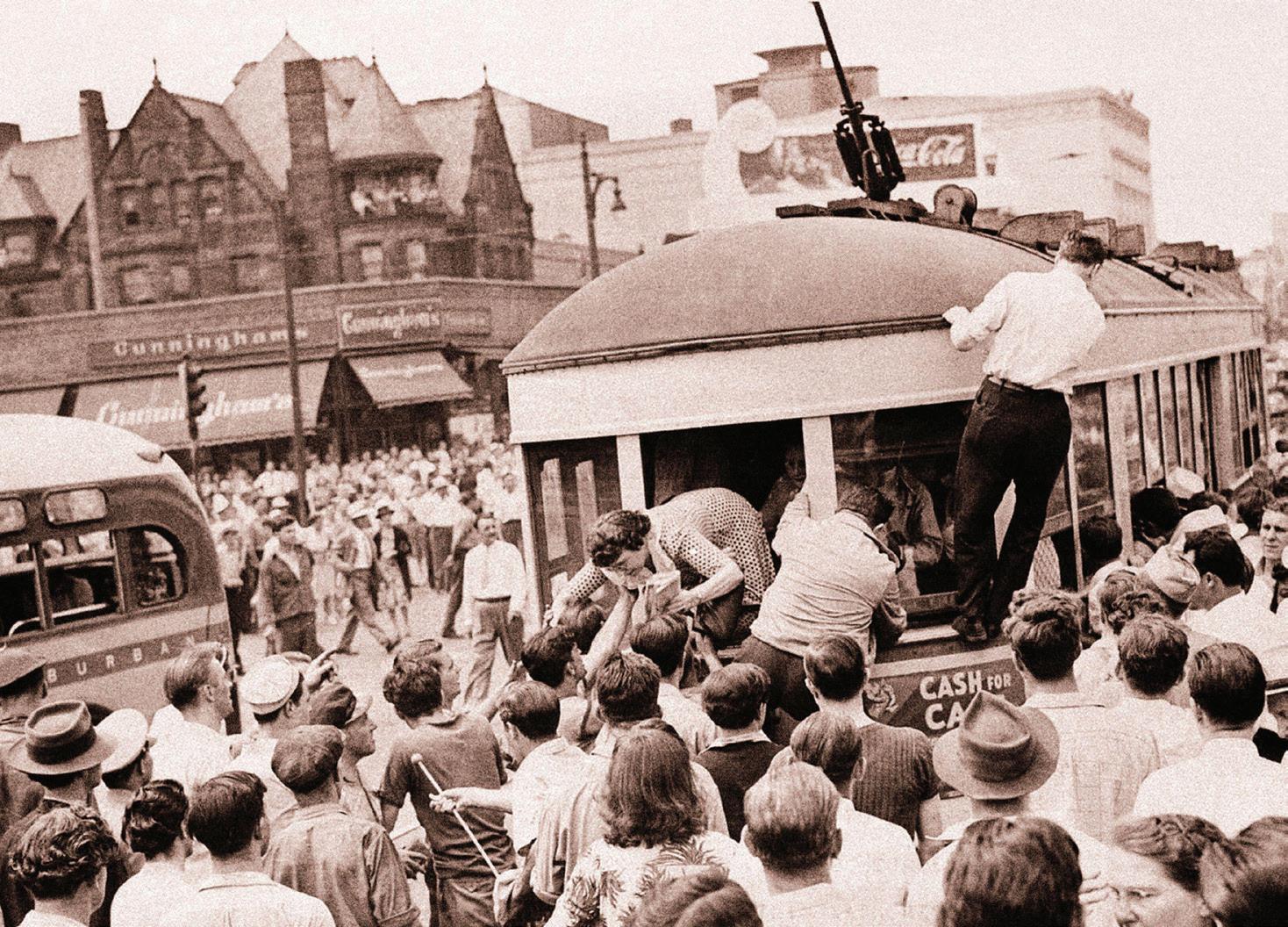
A passenger is dropped from the back window of a tram after a crowd stops transport and starts throwing Black passengers from the car.
THE DETROIT RACE RIOT Racism, poor living conditions and unequal access jobs and housing during wartime leads to race riots in the summer of 1943. When the city tries to construct a Black housing project in an otherwise white neighborhood, an armed white mob gathers, lights a cross on fi re and pickets. Tensions boil over into a fi ght between the races on Belle Isle that spills over into the city, lasts two days and leaves nine whites and 25 Blacks dead.
DEC. 5, 1955
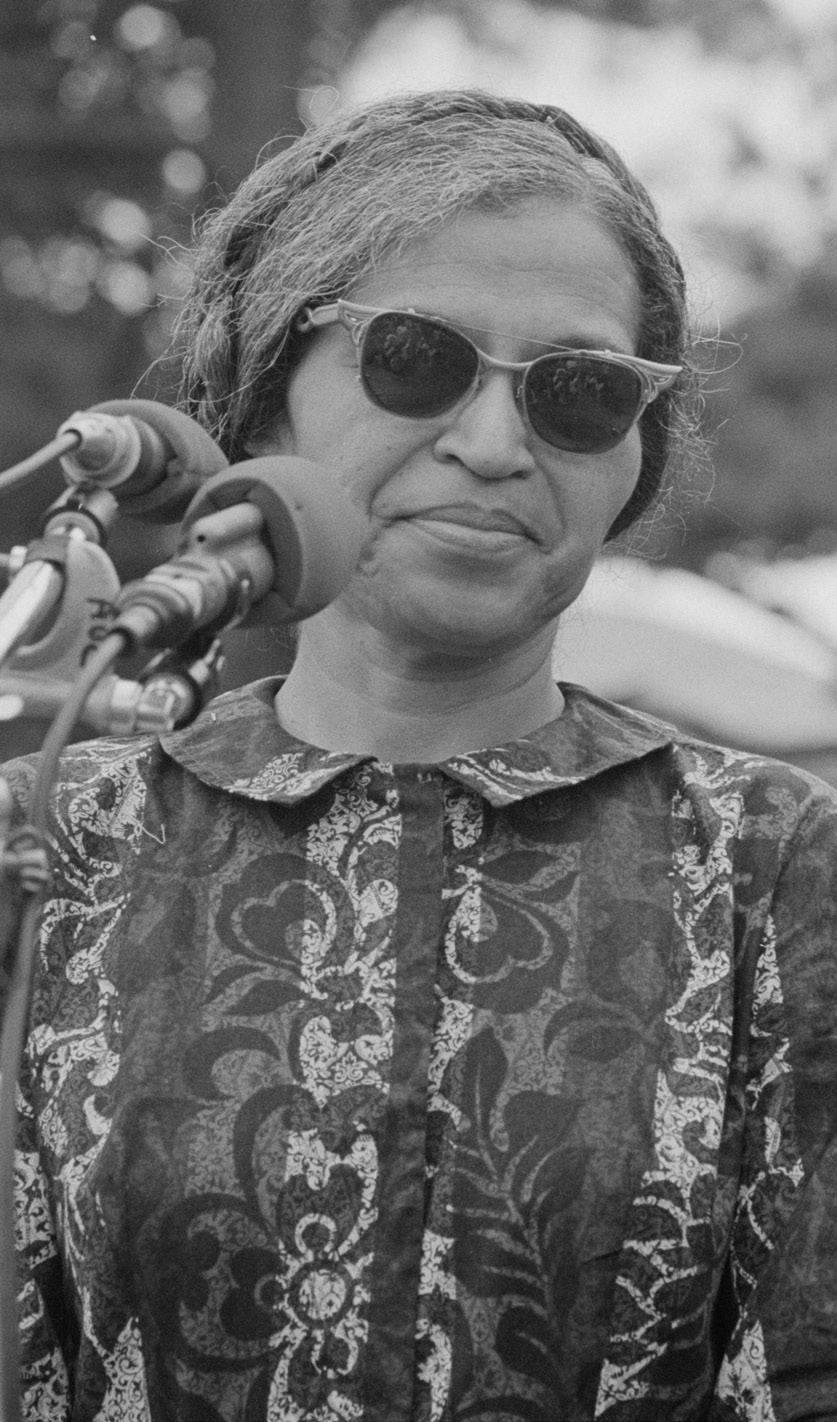
MONTGOMERY BUS BOYCOTT After Rosa Parks is arrested and fi ned for refusing to give up her seat on a bus to a white man in Montgomery, Alabama, the city’s Black citizens organize a bus boycott that lasts 381 days – the fi rst large-scale U.S. demonstration against segregation. The Supreme Court ultimately orders Montgomery to integrate its busing system.
SEPT. 9 1957
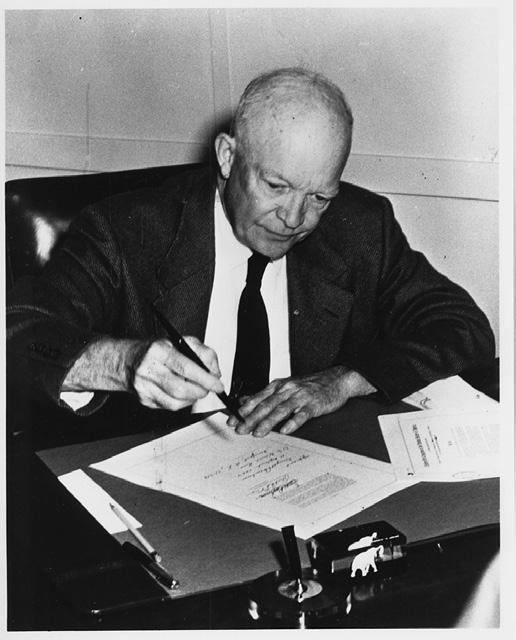
President Dwight D. Eisenhower signing the Civil Rights Act of 1957. Photo courtesy of Wikimedia Commons
CIVIL RIGHTS ACT OF 1957 President Dwight D. Eisenhower signs into law the fi rst civil rights legislation since Reconstruction. The new act establishes the civil rights section of the Justice Department and empowers federal prosecutors to investigate voter suppression. It also establishes the Civil Rights Commission to look into discriminatory conditions.
FEB. 1, 1960
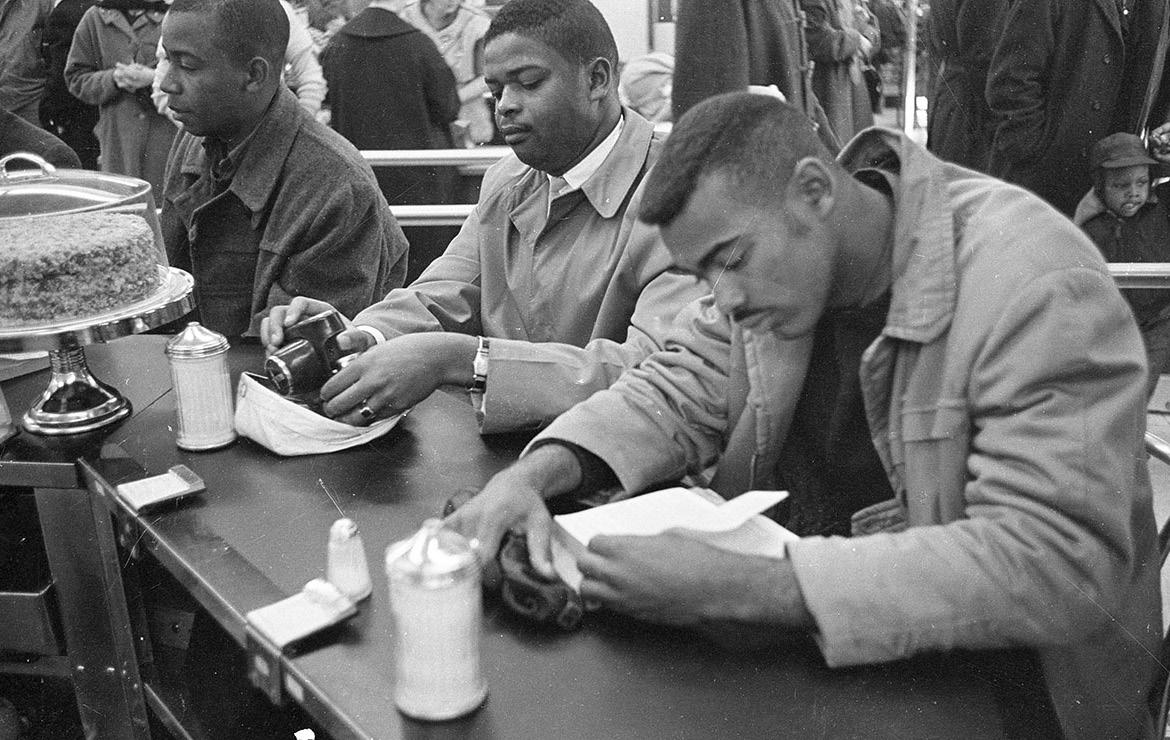
Civil rights protesters and Woolworth's sit-in, Durham, N.C., Feb. 10, 1960. From the News & Observer Negative Collection, State Archives of North Carolina, Raleigh,
N.C. Photo courtesy of the Library of Congress
THE GREENSBORO SIT-IN Four Black college students in Greensboro, North Carolina refuse to leave a Woolworth’s “whites only” lunch counter. “The Greensboro Four” – Ezell Blair Jr., David Richmond, Franklin McCain and Joseph McNeil – were inspired by Gandhi’s nonviolent protest. Their demonstration sparked similar sitins throughout the South.
JUNE 23, 1963
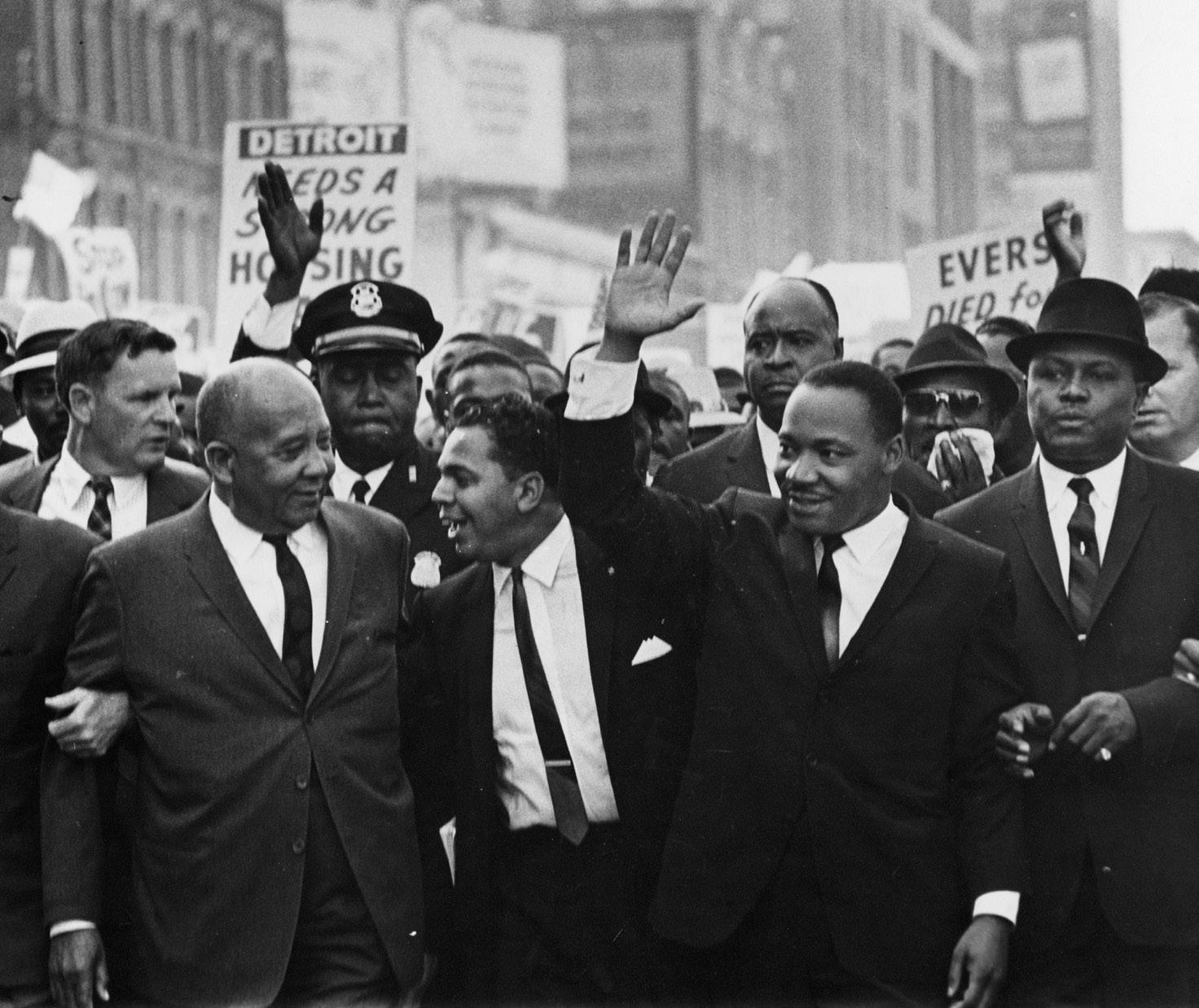
DETROIT WALK TO FREEDOM Rev. Dr. Martin Luther King Jr. leads this march to commemorate the Detroit Race Riot 20 years earlier – and highlight segregation and brutality against civil rights activists in the South and Black concerns in the urban north, like hiring practices and housing. On this afternoon, 125,000 people fi ll Woodward and move in relative silence as 15,000 others look on from sidewalks, windows and roofs.
AUG. 28, 1963

MARCH ON WASHINGTON Conceived by labor leader A. Philip Randolph and thenNAACP Executive Secretary Roy Wilkins, about a quarter of a million people – including 3,000 members of the press – gather near the Lincoln Memorial for the March on Washington for Jobs and Freedom and to hear King give his historic “I Have a Dream” speech.
JULY 2, 1964
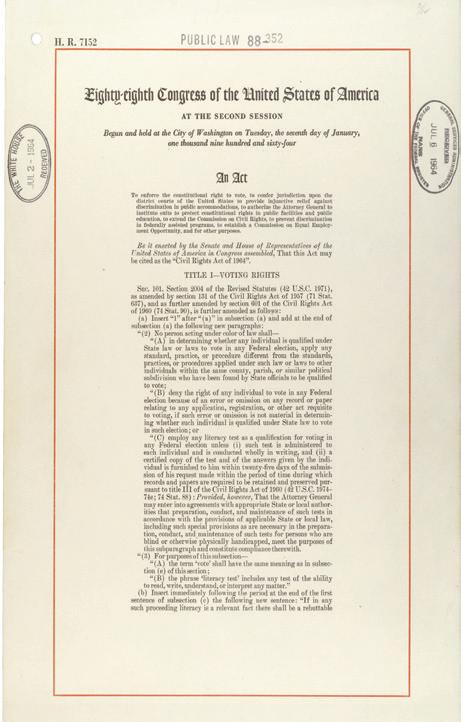
Photo courtesy of Wikimedia Commons
CIVIL RIGHTS ACT OF 1964 First proposed by President John F. Kennedy, after nudging by King and other Black leaders, and signed into law by President Lyndon B. Johnson, this landmark act ended segregation and outlawed employment discrimination on the basis of race, color, religion, sex or national origin.
MARCH 7, 1965
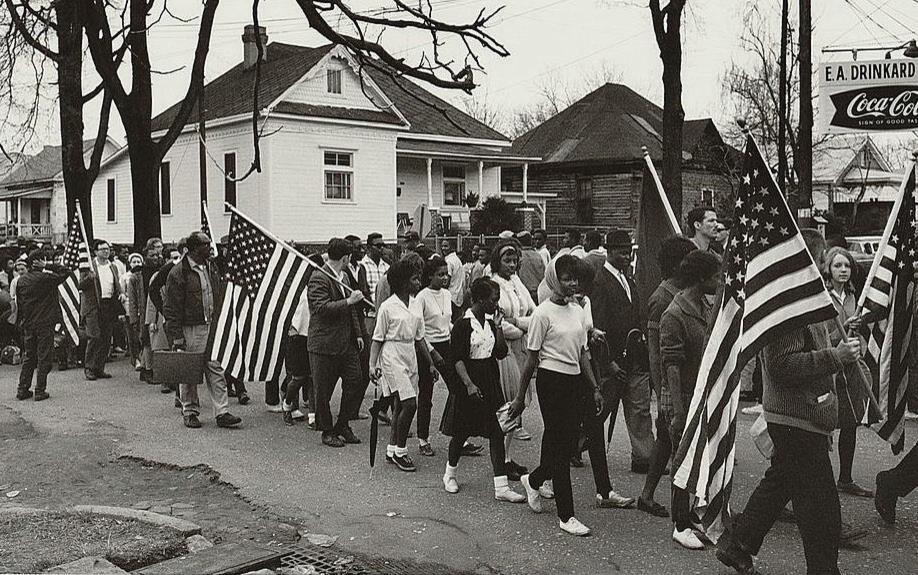
Photo courtesy of Wikimedia Commons
SELMA TO MONTGOMERY MARCH In an effort to register Black voters in the South, peaceful protesters – including Dr. King – marching the 54 miles from Selma to Montgomery, Alabama were met with violence from local authorities, white vigilante groups and state police. The attacks of “Bloody Sunday” were broadcast on national TV, proving the need for a national Voting Rights Act.
AUG. 6, 1965
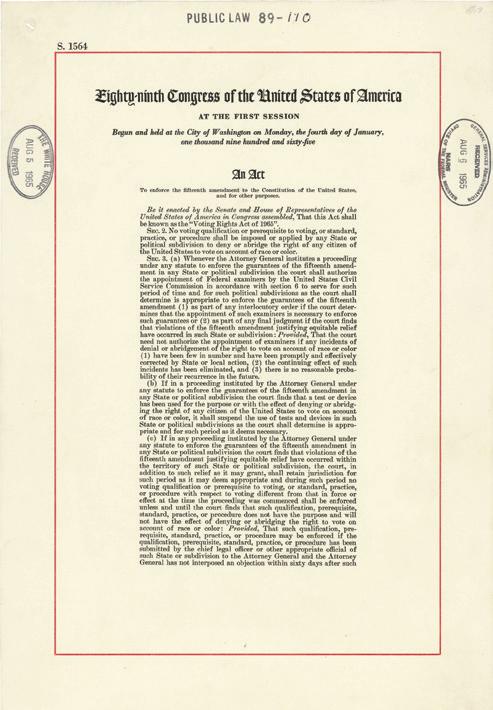
Photo courtesy of Wikimedia Commons
VOTING RIGHTS ACT Signed by Lyndon B. Johnson, this legislation outlaws literacy tests and appoints federal examiners in jurisdictions with a history of voting discrimination. It also forges a relationship between local and federal governments on the issue of voting. Before, states had the power to make their own rules around voting, which allowed them to suppress Black voters with unconstitutional barriers.
OCT. 15, 1966

Elbert Howard, a founding member of the Black Panther Party, speaks of the movement in the U.S. in Mozes en Aäronkerk in Amsterdam.
Photo courtesy of Wikimedia Commons
THE BLACK PANTHER PARTY Founded by Bobby Seale and Huey Newton and originally dubbed the Black Panther Party for Self-Defense, this org challenges police brutality in the Black community. The Black Panthers dress in black berets and leather jackets and organize armed patrols of Oakland, California and other U.S. cities.
JULY 23-28, 1967

12th Street during the first day of the civil unrest.
Photo courtesy of Tony Spina Photographs, Walter P. Reuther Library, Wayne State University
THE DETROIT REBELLION OF 1967 Because of deindustrialization, widespread joblessness and white fl ight, between 1950 and 1960, Detroit loses 20% of its population. A culmination of decades of institutional racism, segregation and tensions between Detroit police and the Black community results in the largest civil disturbance in 20th century America that only relaxes when federal troops are called in. In the end, 43 people die, hundreds more are injured and at least 7,000 are arrested.
APRIL 11, 1968
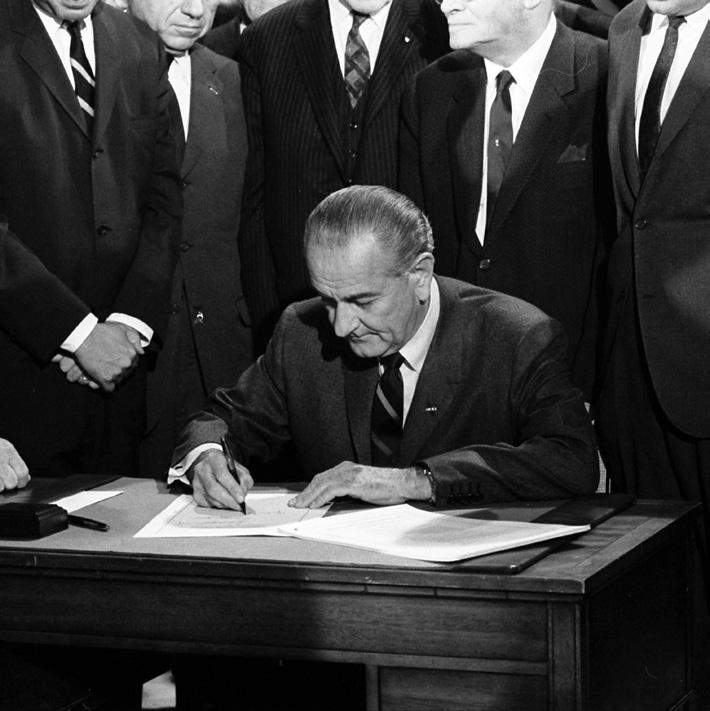
President Johnson signing the Civil Rights Act of 1968
THE FAIR HOUSING ACT Discrimination in housing based on race, religion, sex, national origin and family status is prohibited. This act, signed into law by President Johnson, extends to landlords, real estate companies, municipalities and lending institutions.
JULY 13 2013
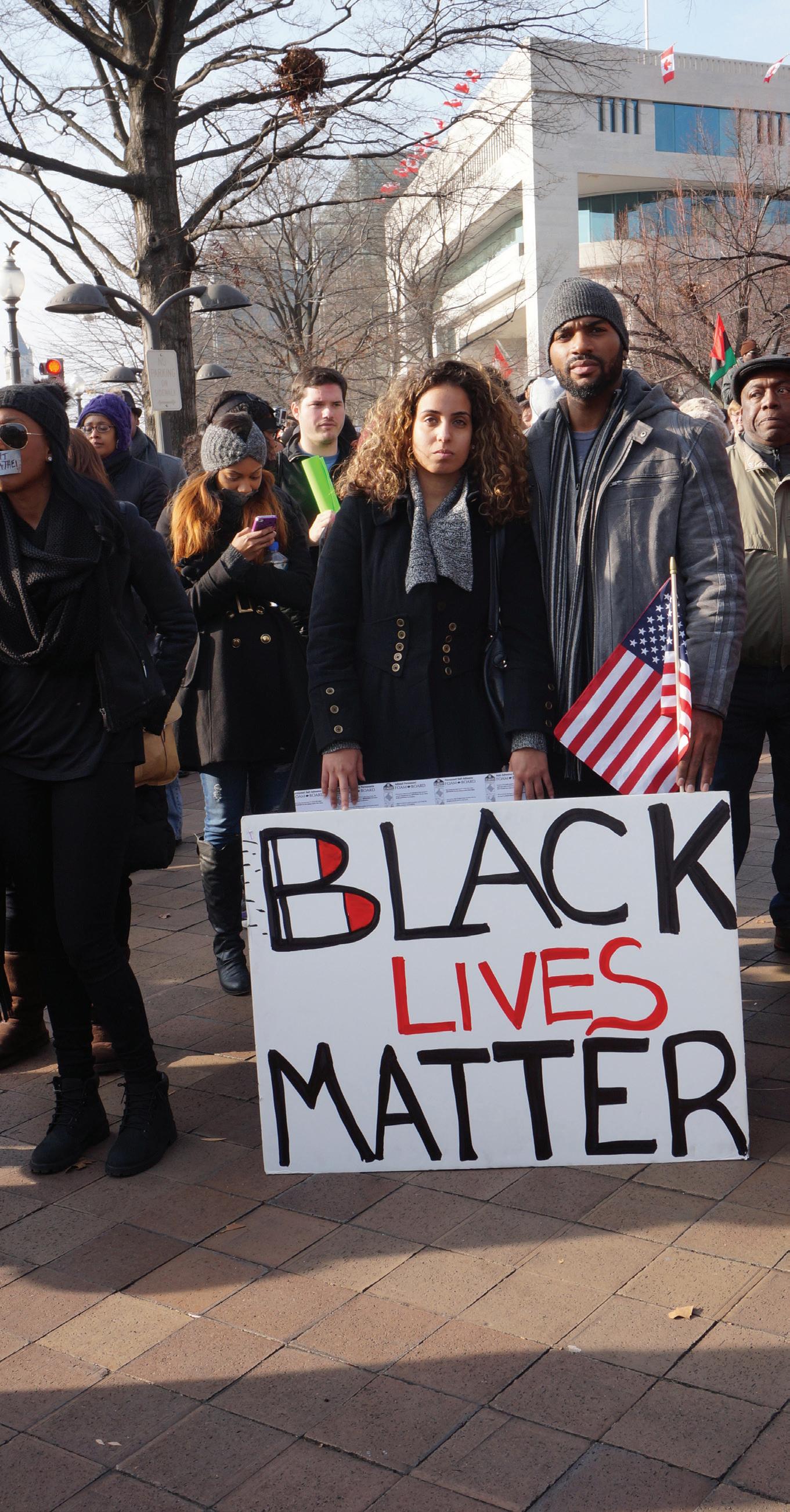
A couple protesting police brutality in a Washington D.C. in December 2014 in response to the deaths of Michael Brown, Eric Garner and Tamir Rice.
BLACK LIVES MATTER In response to the killing of unarmed Black people at the hands of police, this movement is founded with a simple premise that’s grown into a global network of dozens of communities. The mission is to end police brutality, amplify our stories and put Black people in positions of power.
JUNE 15, 2020
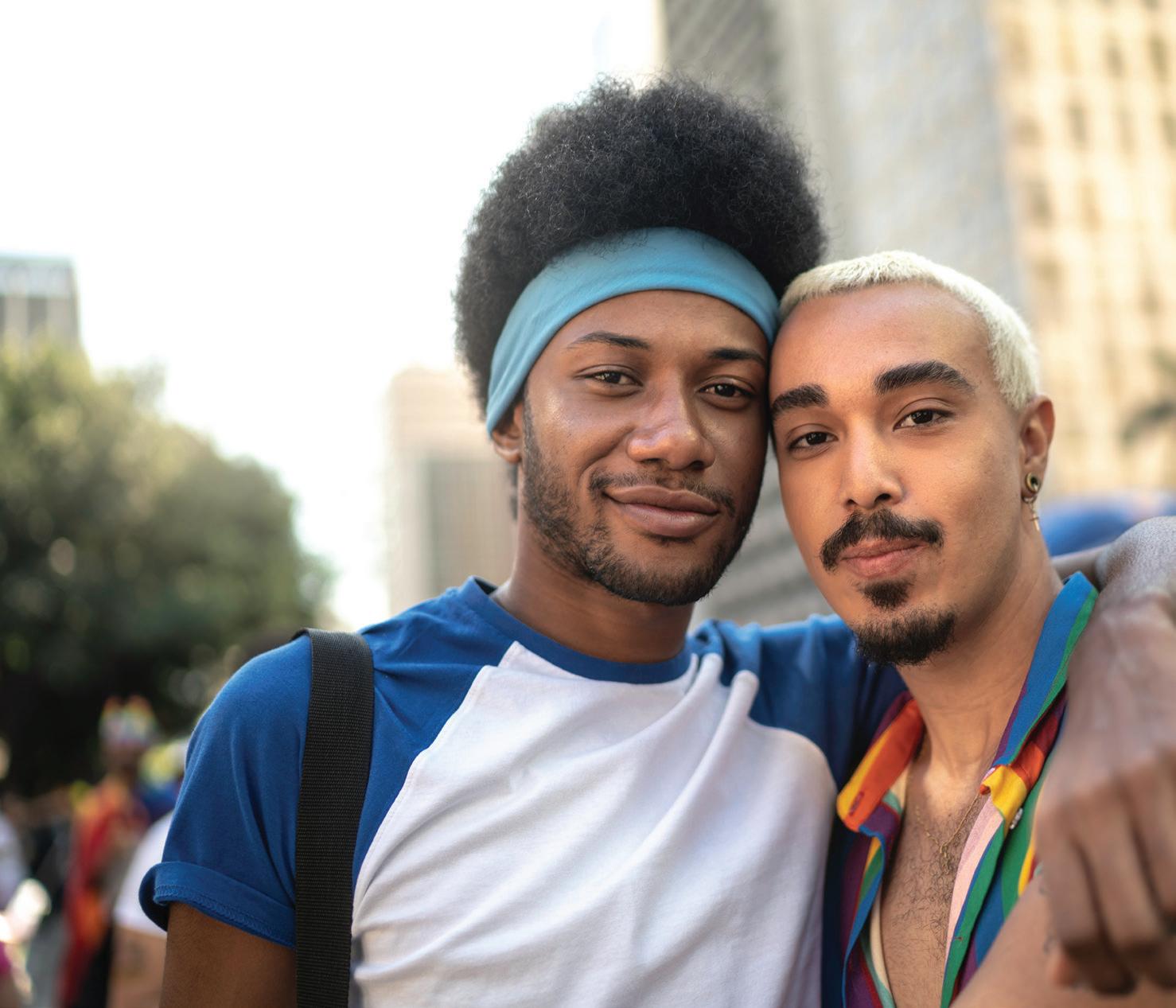
LGBTQ DISCRIMINATION ILLEGAL The Supreme Court rules that the Civil Rights Act of 1964, which protects against sex discrimination in the workplace, extends to sexual orientation and gender identity. For Black gay and transgender Americans who face some of the highest rates of poverty, homelessness and unemployment largely due to discrimination, this was a landmark decision.
JUNE 17, 2020
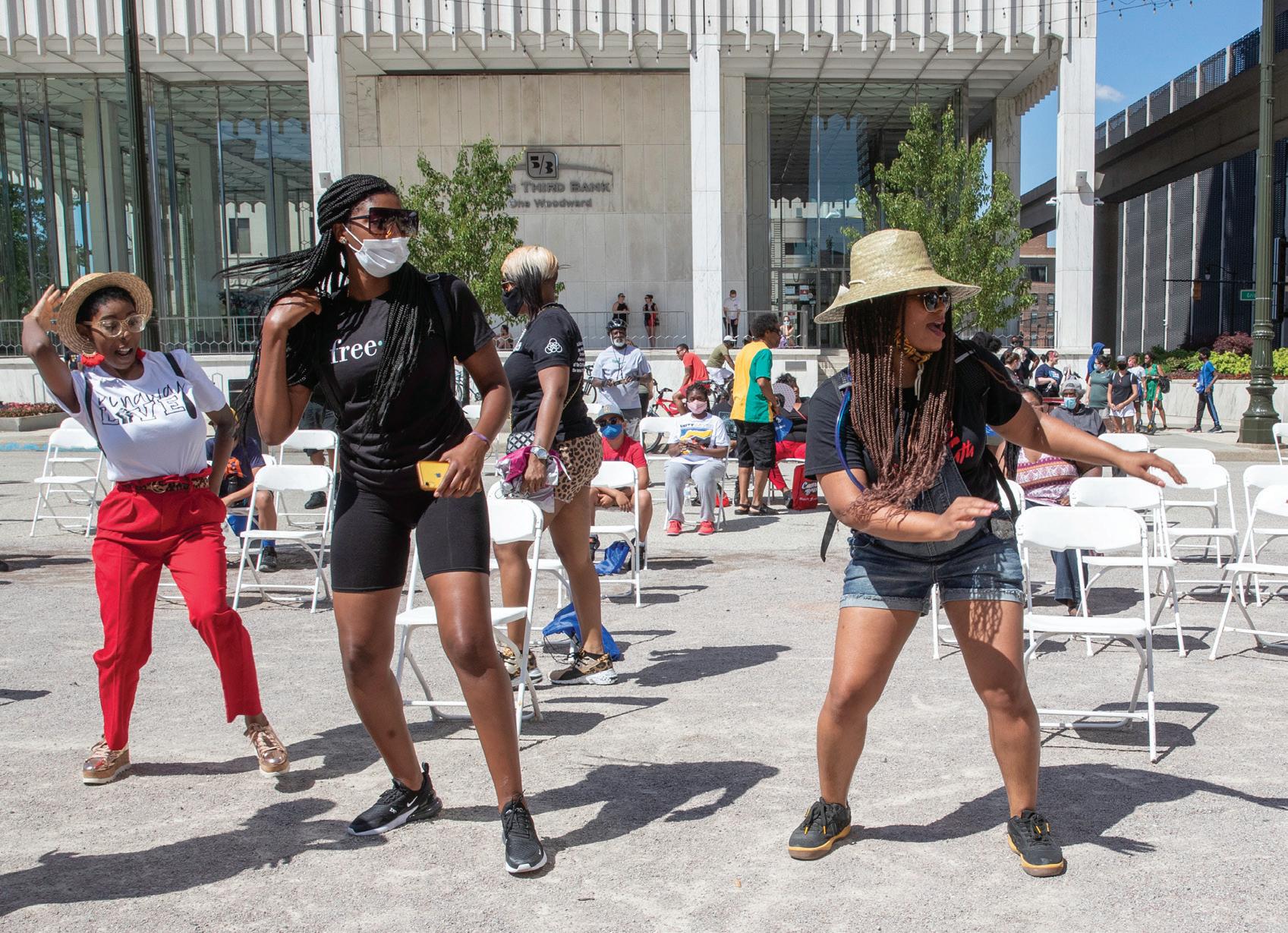
Photo courtesy of the City of Detroit
JUNETEENTH CELEBRATION DAY OFFICIAL Gov. Gretchen Whitmer signs a proclamation declaring June 19, 2020 Juneteenth Celebration Day in Michigan. Juneteenth has been observed quietly within Black circles as the day the last of the enslaved were freed in Galveston, Texas, two years after the Emancipation Proclamation. The governor’s declaration may serve as a catalyst for a national holiday.
PARIS GILES IS BLAC DETROIT’S SENIOR EDITOR.
Sources: Black Lives Matter, Detroit Historical Society, History.com, Library of Congress, Michigan.gov, NAACP, National Archives, The New York Times, The Washington Post, The U.S. Department of Justice, Walter P. Reuther Library









